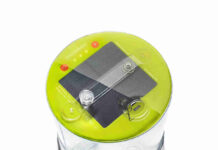Eighteen leading industrial and research partners have joined forces in an EU Fast Track project aiming to further refine this technology. In the next three years, it is planned to produce a marketable prototype with an efficiency of twelve percent. The project is coordinated by Forschungszentrum Jülich and funded to the tune of € 9.3 million by the EU. The kick-off meeting was held in Jülich on 28-29 March.
In recent years, various companies have increased the efficiency of marketable thin-film solar modules to the present level of ten percent. Although these modules are still not as efficient as conventional solar cells, they can be produced much more economically.
In the case of thin-film modules, the silicon is applied to the substrate in a layer about one micrometre thick and does not need to be carefully cut out from expensive wafers. Thin-film silicon solar modules designed as tandem solar cells are particularly efficient. They consist of two layers one on top of the other, which absorb different fractions of sunlight.
Each of these two cell layers is divided into several sublayers which all influence each other in a complex manner. Since these interactions are difficult to predict, existing industrial thin-film solar cells make use of proven combinations of components and substrates.
In the Fast Track project, leading representatives from research and industry who previously pursued different technologies are now pooling their expertise in order to combine the best components. By harmonizing and optimizing different approaches, a new generation of thin-film silicon solar modules will be created with an efficiency of twelve percent. This corresponds to an increase of twenty percent and under test conditions the costs should amount to less than € 0.5 per watt nominal power
In order to achieve this goal, the researchers will experiment with various nanomaterials and optical functional layers and refine the entire process chain. “The basic difficulty consists in adjusting the different components to each other. A slight modification that improves the conductivity of one of the upper layers may, for example, have a negative impact on the current densities generated in the lower layers,” explains project coordinator, Dr. Aad Gordijn from Forschungszentrum Jülich.
The scientists in the Fast Track project aim to influence the optical and electronic properties even more effectively by making use of nanocrystalline silicon dioxide – a novel “multiphase” material, whose solid structure displays greater degrees of freedom than pure silicon.
The surface condition of the various layers is also being scrutinized. Structures on a nanometre scale will help to improve light trapping. However, it is not yet possible to predict what the perfect light-scattering layer will look like. “We are going to test superimpositions of different structures based on craters or pyramids in order to arrive at an optimized morphology,” says Gordijn.
The project was launched on 1 March 2012 and will run until 28 February 2015. Then, at the latest, a new prototype should be available as a model for industrial production.



